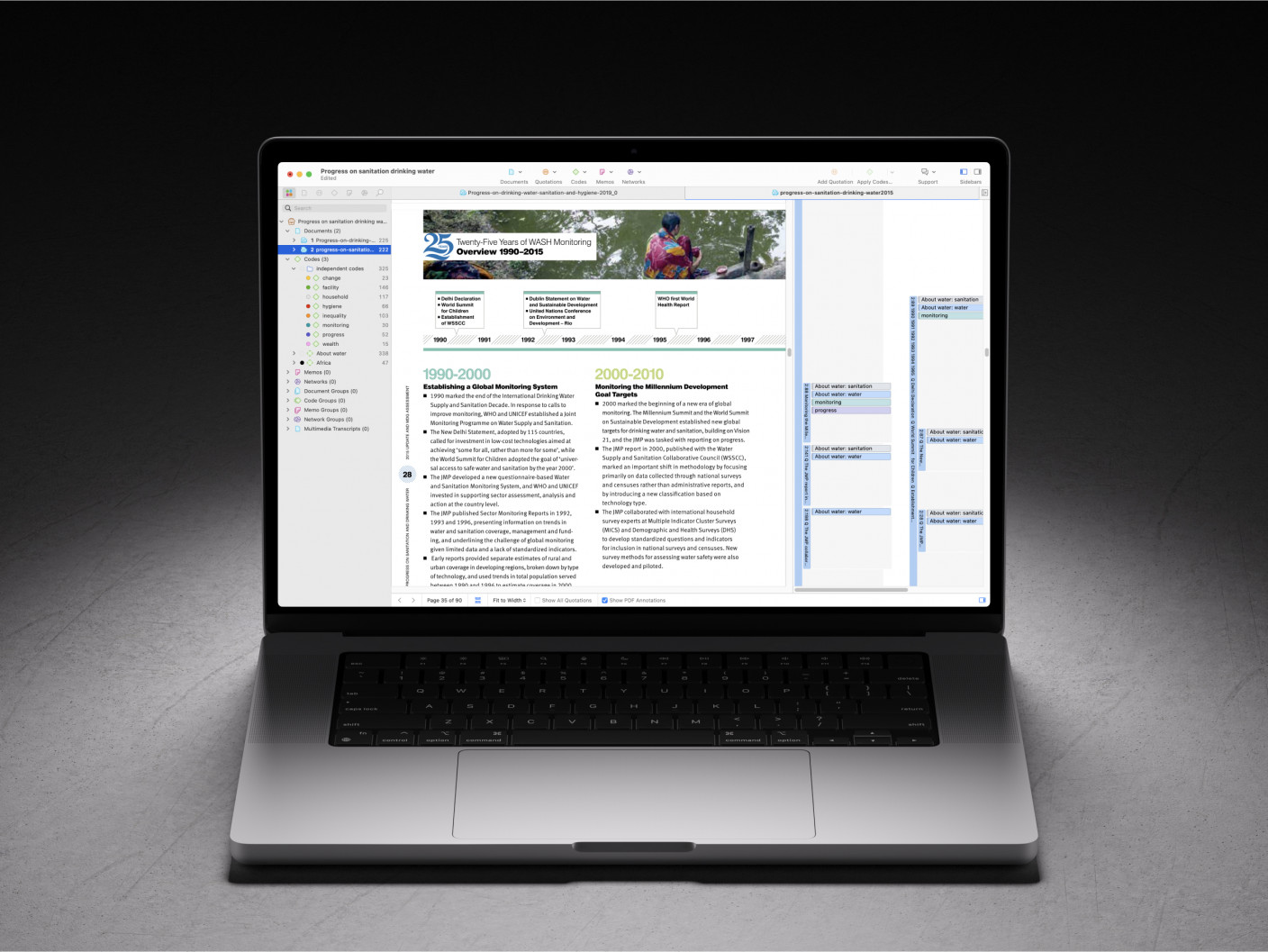- What is Mixed Methods Research?
- Advantages of Mixed Methods Research
- Challenges in Mixed Methods Research
- Common Mistakes in Mixed Methods Research
- Mixed Methods Research Paradigms
- Validity & Reliability in Mixed Methods Research
- Ethical Considerations in Mixed Methods Research
- Mixed Methods vs. Multiple Methods Research
- Mixed Methods Research Designs
- How to Choose the Right Mixed Methods Design
- Convergent Parallel Design
- Explanatory Sequential Design
- Exploratory Sequential Design
- Embedded Mixed Methods Research Design
- Transformative Mixed Methods Design
- Multiphase Mixed Methods Research Design
- How to Conduct Mixed Methods Research
- Sampling Strategies in Mixed Methods Research
- Data Collection in Mixed Methods Research
- Triangulation in Mixed Methods Research
- Data Analysis in Mixed Methods Research
- How to Integrate Quantitative & Qualitative Data?
- How to Interpret Mixed Methods Research Findings?
- Software Tools for Mixed Methods Data Analysis
- How to Write a Mixed Methods Research Proposal
- How to Write a Mixed Methods Research Paper?
- Reporting Results in Mixed Methods Research
- Mixed Methods Research Examples
- How to cite "The Guide to Mixed Methods Research"
Convergent Parallel Design
When a researcher applies a convergent parallel design in mixed methods research, quantitative and qualitative data collection and analysis are done during the same phase of the research process, and the results are then integrated for an overall interpretation. In this article, we will cover the background, definition, advantages, and challenges of convergent parallel design and the steps to apply this mixed methods research design successfully.

Introduction
This design was described as early as the 1970s (Jick, 1979), and it is the most common and well-known approach. This design was originally conceptualized as triangulation but later became refined as a mixed methods research design. It has also been called parallel study, convergence model, and concurrent triangulation throughout the years.
The purpose of the design is to obtain different but complementary data about the same topic to better understand a research problem. It is used when a researcher wants to triangulate methods by comparing and contrasting quantitative and qualitative data for corroboration and validation (Creswell, Piano Clark, 2017). It is also used for illustrating quantitative results with qualitative data and to have a more complete understanding of a phenomenon by comparing multiple levels within a system.
It is also used when there is equal value for collecting and analyzing quantitative and qualitative data to understand a problem, in addition, if there is limited time, simultaneous data collection can be helpful. It is important that the research team has skills in both methods as they must manage extensive data collection and analysis.
Philosophical assumptions in convergent parallel designs
The convergent design in mixed methods research involves the simultaneous collection and analysis of both quantitative and qualitative data. After collecting and analyzing the data separately, the results are merged or integrated to compare, contrast, or combine the findings. Instead of trying to combine different paradigms, researchers are encouraged to use a single paradigm, like pragmatism, to guide the study.
Pragmatism is a philosophical approach that emphasizes the practical application of ideas and the usefulness of knowledge in solving real-world problems. It prioritizes action, outcomes, and the adaptability of thought over fixed principles or absolute truths. Instead of focusing on abstract theories, pragmatism evaluates concepts, beliefs, and methods based on their effectiveness and ability to produce desired results.
Pragmatism guides researchers to choose methods, techniques, and procedures that best address their research questions, drawing freely from qualitative and quantitative approaches. It is not committed to any single system of philosophy or reality and it is well-suited to help integrate both approaches into a unified understanding (Creswell & Piano Clark, 2017).
How to do a convergent parallel design?
Before starting to collect data, the researcher needs to a) clearly state the research problem that requires both quantitative and qualitative perspectives and b) formulate the research questions that align with both data types. The design procedure can then be summarized in four main steps: Collecting quantitative and qualitative data, analyzing the data, merging, and interpreting.
Data collection
The researcher gathers quantitative and qualitative data on the topic simultaneously. Both data types are equally important for addressing the research questions. Quantitative data is typically gathered using surveys, standardized tests, or experiments, focusing on numerical measurement. Qualitative data is often obtained through interviews, focus groups, or observations, aiming to capture rich, descriptive information.
Data analysis
Each data set is analyzed independently, using methods appropriate for quantitative and qualitative data, respectively. Quantitative data analysis may involve statistical tests, such as correlations, regressions, or descriptive statistics to identify patterns and relationships. Qualitative data can be analyzed through thematic coding, content analysis, or narrative analysis (among other approaches) to uncover key themes and insights. The goal is to complete a thorough, independent analysis of each dataset before attempting to connect them.
Data merging
The researcher compares or integrates the results from both datasets. This may involve directly comparing findings or transforming the data to facilitate connections between the two types. This integration can take several forms:
- Comparison: Directly comparing results to identify agreements, differences, or contradictions between the data sets.
- Transformation: Converting one data type to the format of the other (e.g., quantifying qualitative themes or adding narrative context to quantitative findings) to facilitate comparison.
This step is critical for identifying how the two data types complement or contrast with each other in addressing the research questions.
Interpreting merged results
The researcher evaluates how the results align, differ, or relate to each other and determines how they contribute to a deeper understanding of the research purpose. Areas where the results align can strengthen conclusions, while discrepancies can highlight new questions or complexities. This step involves synthesizing insights to form a coherent narrative that explains how the combined results provide a deeper understanding of the issue than either data set alone could provide. The researcher also reflects on how the findings support or challenge the assumptions in the literature.

Strengths of convergent parallel design
The convergent parallel design has several strengths, including its intuitive quality, which refers to the straightforward logic of collecting, analyzing, and merging quantitative and qualitative data at the same time to provide a comprehensive view of the research problem. This is also a very popular design, making it generally easier to understand and apply across different research areas and audiences. Additionally, the design is efficient and less time-consuming because both data sets are collected simultaneously during the initial phase, reducing the overall duration of the study. Another key strength is that the data is collected and analyzed separately using traditional quantitative and qualitative analysis methods, allowing researchers to rely on familiar, well-established techniques instead of having to learn new methodologies. This enhances both the accessibility and flexibility of the design for researchers from diverse backgrounds.
Challenges of convergent parallel design
In terms of challenges, convergent parallel design requires effort and expertise for each research method. The focus on giving equal importance to each dataset may need to be addressed by a research team which would require more organization and resources than if it were done by a single researcher. The merging step can also be complex, as researchers must consider the consequences of the two different natures of the data. Researchers must align their data collection and analysis to match the same concepts, which can be challenging given the nature of each dataset. When discrepancies arise, researchers may find it confusing, as contradictions may provide new insights but can be difficult to resolve and may require further data collection.
Convergent design variants
According to Creswell (2017), the convergent design has variants commonly found in the literature. These include the parallel databases, data transformation, and data-validation variants.
The parallel databases variant
This approach involves conducting two separate strands of research—quantitative and qualitative—independently. These strands are only combined during the interpretation stage. The purpose is to explore different aspects of a phenomenon and later synthesize or compare the findings during the discussion phase. For instance, Feldon and Kafai (2008) used ethnographic interviews, survey responses, and server logs to provide a comprehensive understanding of youth activities in virtual online communities.
Data-validation variant
This method integrates qualitative and quantitative data within the same instrument, such as a survey, by including both open- and closed-ended questions. The qualitative responses are used to support or validate the quantitative findings. While the qualitative data collected may not form a full contextual narrative, it provides themes and illustrative quotes that enrich and confirm the quantitative results. Webb, Sweet, and Pretty (2002) included qualitative questions in their survey to validate the quantitative findings regarding the psychological effects of mass casualty events on forensic odontologists.
Data-transformation variant
In this variant, researchers give unequal emphasis to one strand (typically quantitative) and use data transformation methods to merge findings. After analyzing both data sets separately, qualitative results are quantified (e.g., coding themes into variables) to enable integration with the quantitative data for further analysis. Pagano, Hirsch, Deutsch, and McAdams (2002) used this method in their study of parental values by coding interview themes as “present” or “not present,” which were then analyzed with quantitative techniques like regression and correlations to explore relationships and demographic differences.
Examples and key research studies
Triangulating methods in convergent parallel designs
Todd D. Jick’s article Mixing Qualitative and Quantitative Methods: Triangulation in Action (1979) is a foundational work in mixed methods research, introducing triangulation as a strategy to integrate qualitative and quantitative methods to enhance research validity and depth.
Triangulation, which Jick defines as combining methodologies to study the same phenomenon, is categorized into between-methods (e.g., using interviews and surveys) and within-methods (e.g., employing multiple techniques within a single approach). This approach leverages the strengths of each method while addressing their limitations and provides richer and more credible findings. Jick highlights its application in organizational research, where combining fieldwork with quantitative tools can yield a holistic understanding of complex phenomena. By emphasizing the complementary nature of qualitative and quantitative approaches, Jick's article helped establish mixed methods as a robust framework for comprehensive research (Jick, 1979).
Triangulating findings in convergent parallel designs
A convergent parallel design with a data-validation variant is showcased in the article by Webb, Sweet, and Pretty (2002), which investigated the psychological and emotional experiences of forensic odontologists involved in mass casualty incidents (MCIs).
In this study, both quantitative and qualitative data collection was done with a single questionnaire. Quantitative data collection was done through psychometric tools, including the Positive and Negative Affect Scale (PANAS) and the Impact of Events Scale (IOE). These tools measured emotional states such as enthusiasm, determination, distress, and avoidance behaviors, providing statistically robust insights into participants’ psychological reactions. Simultaneously, qualitative data was collected through open-ended questions that invited respondents to describe their personal experiences during MCIs. These responses uncovered themes such as the rewarding aspects of teamwork and professional fulfillment, as well as challenges linked to poor working conditions, political dynamics, and the trauma of handling victims.
The integration of these datasets occurred during analysis, where the qualitative research helped contextualize and explain the patterns identified in the quantitative data. For example, while the PANAS measurement indicated high levels of positive affect, the qualitative data clarified that feelings of camaraderie were a major contributing factor. This convergent design allowed the researchers to triangulate findings, using qualitative depth to enrich and validate quantitative trends, thereby capturing the complex dual emotional impacts of MCIs on forensic odontologists.
Conclusion
The convergent parallel design in mixed methods research provides a structured and effective way to integrate qualitative and quantitative data, offering a more comprehensive understanding of research problems. By collecting and analyzing both types of data simultaneously, this approach allows researchers to compare, contrast, and merge findings to uncover deeper insights. While it presents challenges, such as the complexity of merging different data types and requiring expertise in both methodologies, its strengths make it a widely used and valuable research design.
Understanding the philosophical foundations, practical steps, and common variants of this design helps researchers apply it effectively in their studies. By leveraging convergent parallel designs, you can strengthen the validity of your research and enhance the depth of your findings.
References
- Creswell, J. W., & Plano Clark, V. L. (2017). Designing and conducting mixed methods research (3rd ed.). SAGE Publications.
- Feldon, D. F., & Kafai, Y. B. (2008). Mixed methods for mixed reality: Overcoming methodological challenges to understand user activities in virtual worlds. Educational Technology Research and Development, 56(5-6), 575-593.
- Jick, T. D. (1979). Mixing Qualitative and Quantitative Methods: Triangulation in Action. Administrative Science Quarterly, 24(4), 602–611.
- Pagano, M. E., Hirsch, B. J., Deutsch, N. L., & McAdams, D. P. (2002). The Transmission of Values to School-Age and Young Adult Offspring: Race and Gender Differences in Parenting. Journal of Feminist Family Therapy: An International Forum, 14(3-4), 13–26.
- Webb, D.A., Sweet, D., & Pretty, I.A. (2002). The emotional and psychological impact of mass casualty incidents on forensic odontologists. Journal of forensic sciences, 47 3, 539-41.


